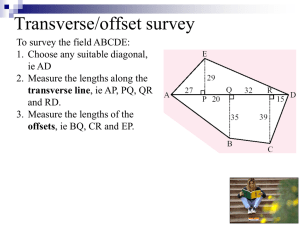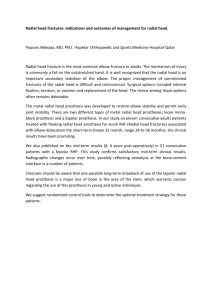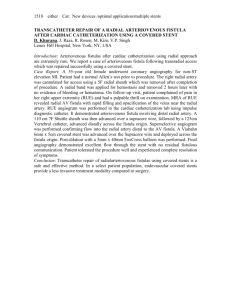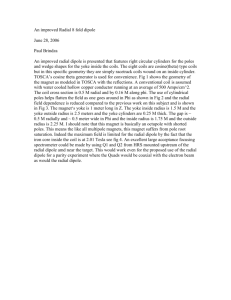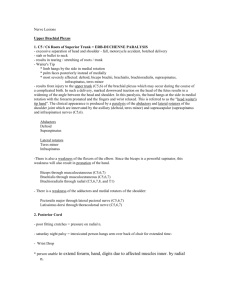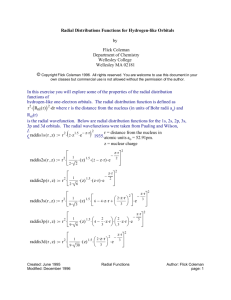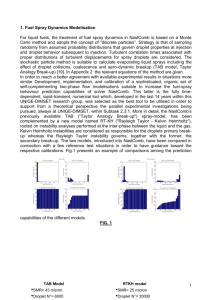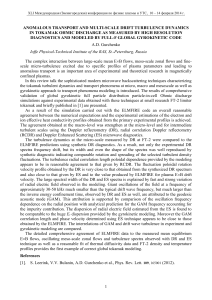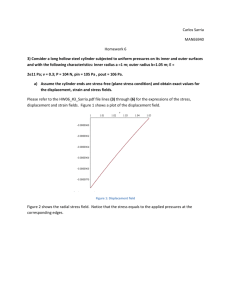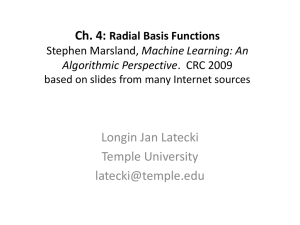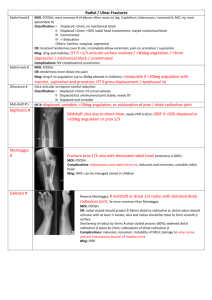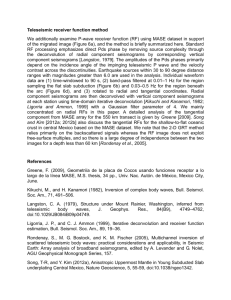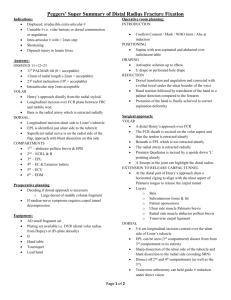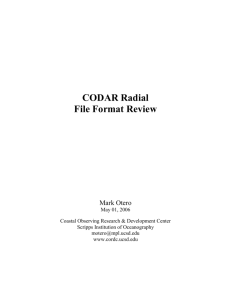Holographic thermalisation with radial flow
advertisement
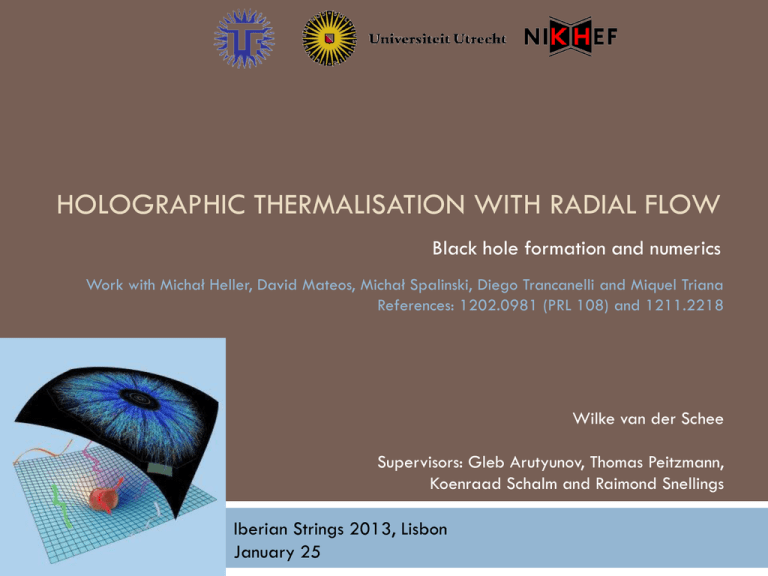
HOLOGRAPHIC THERMALISATION WITH RADIAL FLOW Black hole formation and numerics Work with Michał Heller, David Mateos, Michał Spalinski, Diego Trancanelli and Miquel Triana References: 1202.0981 (PRL 108) and 1211.2218 Wilke van der Schee Supervisors: Gleb Arutyunov, Thomas Peitzmann, Koenraad Schalm and Raimond Snellings Iberian Strings 2013, Lisbon January 25 Outline 2/17 How does the Quark-Gluon plasma thermalise? Model by black hole formation Usually have to resort to numerics… Results on evolution of boost-invariant radial flow Is this really hard? No, but use Mathematica smartly Shock waves 3/17 Famous example: Homogeneous in transverse plane (‘infinite nucleus’) Final energy density not boost-invariant (feature or drawback?) P.M. Chesler and L.G. Yaffe, Holography and colliding gravitational shock waves in asymptotically AdS5 spacetime (2010) Radial flow – initial conditions 4/17 Two scales: energy density and size nucleus Energy density is from Glauber model (~Gaussian) No momentum flow (start at t ~ 0.1fm/c) Scale solution such that Metric functions ~ vacuum AdS (can try other things!) H. Niemi, G.S. Denicol, P. Huovinen, E. Molnár and D.H. Rischke, Influence of the shear viscosity of the quark-gluon plasma on elliptic flow (2011) Radial flow – results 5/17 WS, Holographic thermalization with radial flow (2012) Radial flow – results 6/17 Radial flow – acceleration 7/17 Velocity increases rapidly: Fluctuation spreads out, nucleus keeps accelerating 1031 g Radial flow – hydrodynamics 8/17 Thermalisation is quick, but viscosity contributes Radial flow – a comparison 9/17 Gives AdS/CFT comparison to i.e. Vredevoogd and Pratt: s: flux in stress tensor e: energy density e0: initial energy density So have a local formula for velocity at some time Works especially well at larger scales J. Vredevoogd, S. Pratt, Universal Flow in the First Stage of Relativistic Heavy Ion Collisions (2008) Radial flow - calculation 10/17 Calculation incorporating longitudinal and radial expansion Numerical scheme very similar to colliding shock waves: Assume boost-invariance on collision axis Assume rotational symmetry (central collision) 2+1D nested Einstein equations in AdS P.M. Chesler and L.G. Yaffe, Holography and colliding gravitational shock waves in asymptotically AdS5 spacetime (2010) Einstein equations in characteristic formulation 11/17 Very old trick: Use null coordinates Split out determinant spatial part metric Write time derivatives along geodesics: The real trick: H. Bondi, Gravitational Waves in General Relativity (1960) P.M. Chesler and L.G. Yaffe, Horizon formation and far-from-equilibrium isotropization in supersymmetric Yang-Mills plasma (2008) Einstein equations 12/17 Einstein equations: Stress-energy tensor: With etc Singularity at 13/17 Don’t determine etc by taking 4 derivatives… So subtract first few terms: Then replace to numerical values: Solving the LDEs 14/17 Use spectral methods to solve nested LDEs: Time stepping with Adams-Bashforth magic? http://en.wikipedia.org/wiki/Linear_multistep_method#Adams.E2.80.93Bashforth_methods Technicalities 15/17 Use Chebyshev twice (but transform: Add regulator energy density (~3%) Avoid having to solve all the way to Poincare horizon Avoid caustics, have a planar horizon Interpret boundary conditions naturally Avoid imposing conditions in r-direction by hand J. P. Boyd, Chebyshev and Fourier Spectral Methods (2000) ) More details… 16/17 Slightly cheating: Need to look at What is and more carefully ? Fix apparent horizon at Use Newton’s method to find it Find to keep it fixed (more Solve[]) Conservation of SE/constraint equations: Evolve and separately Numerical check: is constraint satisfied? J. Thornburg, Finding Apparent Horizons in Numerical Relativity (1995) Discussion 17/17 Numerical scheme provides excellent basis Homogeneous setting: study initial states/quasi-normal modes Radial flow, fluctuations, elliptic flow Looks like velocity is determined locally Initial state for radial flow is slightly ad-hoc What happens universally? Various problems: very strong coupling, susy, large N etc… More details/presentations/notebook: http://www.staff.science.uu.nl/~schee118/


